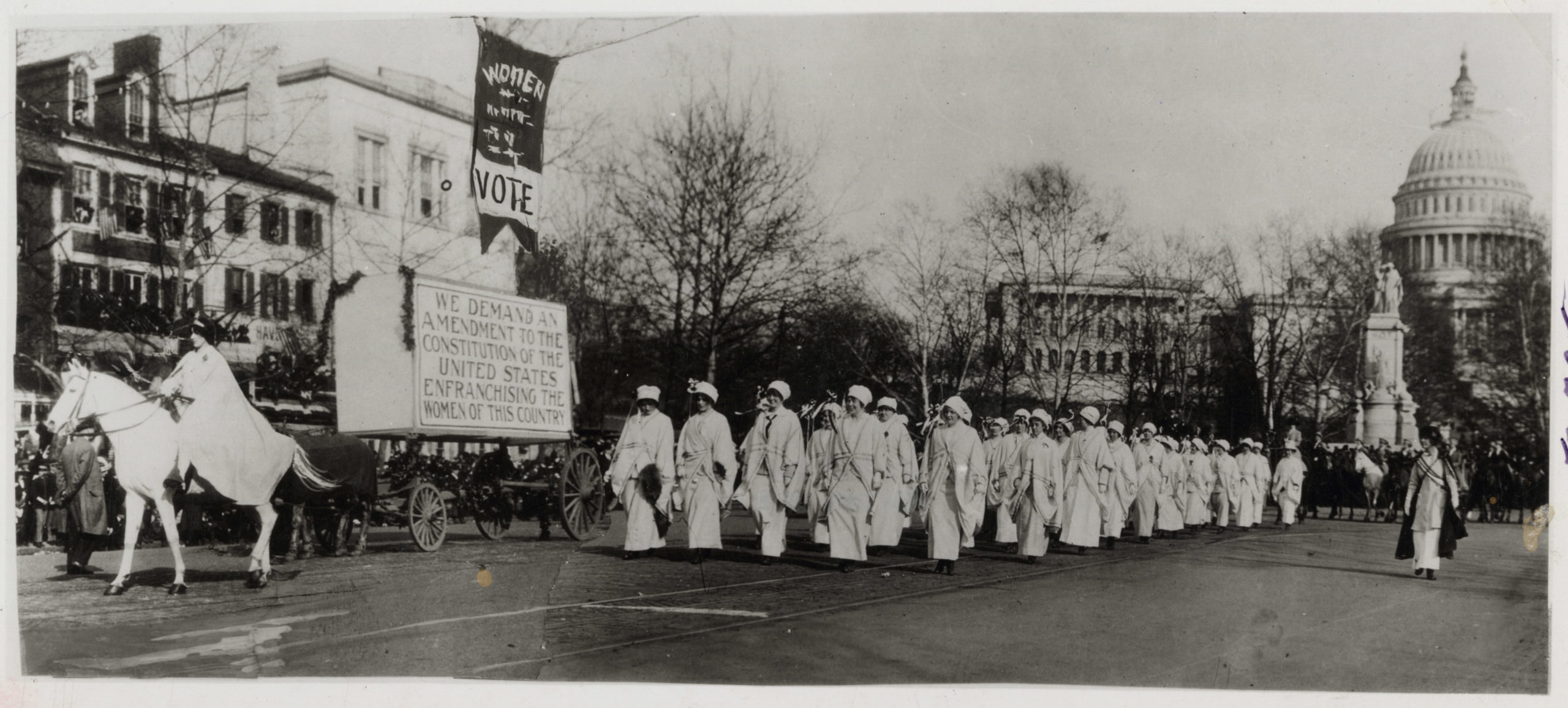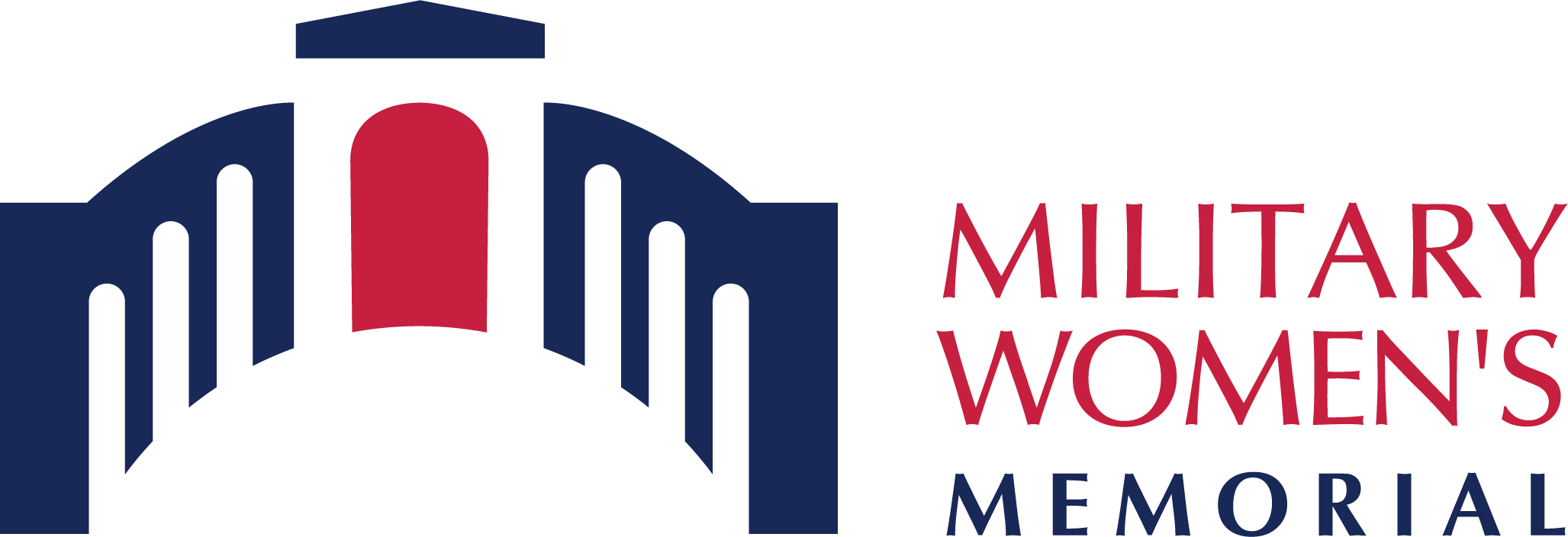Women Win the Right to Vote: Women’s Service in WWI Tipping Point for 19th Amendment

WWI and Women’s Suffrage
In 1914 after the assassination of Austria’s Archduke Franz Ferdinand, World War I started. On April 6, 1917, the United States entered WWI when it declared war on the German Empire. The United States joined the Allied Powers (France, Great Britain, Italy, Japan, Russia, and many other countries) in the Great War against the Central Powers (Germany, Austria-Hungary, Bulgaria, and the Ottoman Empire). WWI lasted four years.
Preparing for WWI
“Preparedness Movement, in U.S. history, is a campaign that began prior to U.S. entry into World War I (April 1917) to increase U.S. military capabilities and to convince the U.S. citizenry of the need for American involvement in the conflict and ongoing military preparedness. Almost immediately after the outbreak of hostilities in Europe, a small number of Americans—former president Theodore Roosevelt being among the most prominent—sought to persuade the administration of Pres. Woodrow Wilson and the population at large that the country must prepare itself for war. … Organizations such as the National Security League, American Defense Society, League to Enforce Peace, and American Rights Committee sponsored preparedness parades and sought to pressure Wilson into strengthening national defenses. Initially, however, Wilson was unmoved by—and even hostile to—the preparedness advocates. Not until German submarine attacks and especially the sinking of the Lusitania (May 7, 1915) did the administration begin to favor an increase in armaments. With passage of the National Defense Act (June 3, 1916) and a subsequent naval appropriations measure authorizing an enormous increase in U.S. armed forces, the Preparedness Movement shifted its focus, and the Military Training Camps Association helped establish the 16 officer-training camps (including two at Plattsburg, along with one at both the Presidio and Fort Sheridan) that provided the bulk of the officer corps necessary to lead the U.S. war effort.” (From https://www.britannica.com/event/Preparedness-Movement)
Women in WWI
“At the time of the First World War, most women were barred from voting or serving in military combat roles. Many saw the war as an opportunity to not only serve their countries but to gain more rights and independence. With millions of men away from home, women filled manufacturing and agricultural positions on the home front. Others provided support on the front lines as nurses, doctors, ambulance drivers, translators and, in rare cases, on the battlefield.
One observer wrote that American women “do anything they were given to do; that their hours are long; that their task is hard; that for them there is small hope of medals and citations and glittering homecoming parades.” (from “Women in WWI,” National WWI Museum and Memorial, https://bit.ly/3TPm69n)
Doctors, Nurses and Ambulance Drivers
“The Salvation Army, the Red Cross and many other organizations depended on thousands of female volunteers. The American Red Cross operated hospitals to care for war casualties, staffed by nurses, hundreds of whom died in service during the war. Thousands of women also served in the U.S. Army Nurse Corps and the Navy Nurse Corps. While the American Expeditionary Forces were still preparing to go overseas, U.S. Army nurses were sent ahead and assigned to the British Expeditionary Force. By June 1918, there were more than 3,000 American nurses in over 750 British-run hospitals in France.” (from “Women in WWI” https://bit.ly/3TPm69n)
Female Yeomen
“Despite thousands of new recruits, the U.S. Navy was short-handed at the beginning of World War I. Vague wording in a section of the Naval Act of 1916 outlining who could serve created a loophole: women were able to join the ranks as Yeomen, non-commissioned officers. Around 12,000 women enlisted in the Navy under the title, “Yeoman (F).” (from “Women in WWI” https://bit.ly/3TPm69n)
On March 3, 1917, the Naval Reserve was created. The legislation creating the Reserve was a monumental action for the Navy, permitting it to “man” the force in greater numbers in preparation for America’s entry into World War I. The legislation also permitted another action that was likely unintended – the service of women. Eligibility for the Regular Navy required the individual be a citizen and male. Whether intentionally omitted or not, eligibility for the Naval Reserve called for citizenship. There was no mention of gender. Seizing upon the opportunity to “free a man to fight,” the Secretary of the Navy opened enlistment to women. On March 17, 1917, Loretta Perfectus Walsh became the first woman to enlist in the Naval Reserve. On March 21, 1917, Walsh was sworn in as Chief Yeoman, making her the first woman Chief Petty Officer in the Navy. As such, Walsh became the first woman, serving as a woman (an important distinction), to serve in the U.S. Armed Forces. Thousands of women enlisted, joining Walsh and others as Yeoman (F), often referred to as Yeomanettes.
The “Hello Girls”
“Aiming to improve communications on the Western front between the Allied Forces, General John J. Pershing called for the creation of the Signal Corps Female Telephone Operators Unit. The unit recruited women who were bilingual in French and English to serve as telephone switchboard operators on the Western front. The women received physical training, observed strict military protocol, wore identity discs and worked very close to the front lines. These female recruits were nicknamed the “Hello Girls” (a term which some of them felt disparaged their efforts) and became known for their bravery and focus under pressure. However, upon their return to the United States after the end of the war, the “Hello Girls” did not receive veteran status or benefits.” (from “Women in WWI” https://bit.ly/3TPm69n)
By war’s end, some 11,275 women had served in the Naval Reserve, 305 in the Marine Corps Reserve, and a handful in the Coast Guard Reserve. All served stateside in a variety of jobs, including translators, draftsmen, fingerprint-experts, camouflage designers and recruiting agents. More than 23,000 nurses had served in the Red Cross, US Army, and US Navy. Of them, over 10,000 served overseas. 223 Hello Girls had served overseas during the war despite not receiving veteran status upon their return.
The United States entry into WWI and the participation of women in the war effort at home and abroad by assuming roles that were traditionally reserved for men and volunteering to serve the nation in and with the US military propelled women’s suffrage efforts to new heights. Furthermore, the service of military women of World War I helped with women earning the right to vote. Always before, it was argued that women didn’t fulfill the full responsibilities of a citizen – they didn’t serve in the military – and, therefore, were not permitted to vote. It was the dedication, service, and sacrifice of these women of World War I that was the tipping point for passage of the 19th Amendment. Their service and partnership in the war effort was undeniable and crucial to the victory of the Allied Powers.
The Battle for Suffrage
“The service of American women at war cost them more than just the burden of putting their lives on hold, deferring marriage and children, or pursuing higher education. The sacrifice of these women went far beyond that; in all more than six-hundred of these patriotic women lost their lives in service to their nation. The question was, how would the nation return that debt?
Suffragists were at war; many suffragists were cooperating with Wilson in hopes of securing his support for suffrage while other suffragists were being imprisoned and brutally treated for protesting Wilson’s reluctance to extend women the vote. Both the moderate suffragists and the militant suffragists were exerting pressure upon Wilson, and millions of American women were demonstrating, through service and sacrifice, their claim to full citizenship.
Finally Wilson, at best a reluctant supporter of suffrage, threw his support behind the issue. On September 30, 1918 with war’s end weeks away, Wilson addressed Congress:
“We have made partners of the women in this war…Shall we admit them only to a partnership of suffering and sacrifice and toil and not to a partnership of privilege?”
With the support of the president the die was cast. Although the Susan B. Anthony bill – to give women the right to vote – was [to] be debated by Congress for many months, and the issue would be contentiously battled out among the states for ratification. Finally on August 18, 1920, the Susan B. Anthony amendment became the nineteenth amendment to the Constitution of the United States. With that, twenty-million women won the right to vote. They were not given the right to vote; they were not given anything. This was a battle involving service, sacrifice, protest, imprisonment, unflinching commitment to the war even including loss of life, and they won. They won victory in war, and a victory that remains with us.” (from “Women in WWI,” NPS, https://bit.ly/4cNHCEg
Image from National Archives – Women Marching in Suffrage Parade, Washington, DC, 1913.
